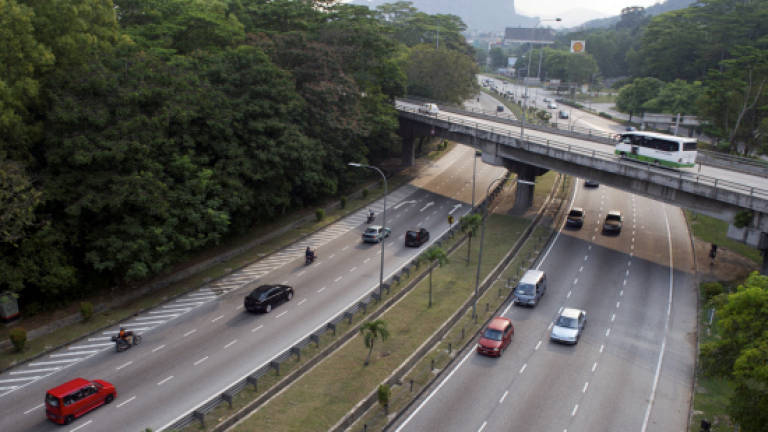Repeat traffic offenders to pay higher insurance premium

PETALING JAYA: Repeat traffic offenders will from July 1 have to pay higher motor insurance premiums under a new regulation to encourage safe driving habits.
The change, said General Insurance Association of Malaysia (PIAM) corporate communications manager Kuan Shook Quan was in line with an earlier announcement by Bank Negara Malaysia (BNM).
BNM last year announced that from July 1, this year, how much one pays for insurance will no longer be determined by fixed price lists, but by his or her risk profile. This means that theoretically, no two insurers will have identical pricing for a motor comprehensive policy.
Kuan said premiums would soon be charged based on the risk profile of the insured, in addition to the present model, age and cubic capacity of the insured vehicle.
She said these (risk factors) included driving habits, claims history, usage and safety features of the vehicle.
Kuan said this new policy, which is similar to a risk-based insurance, would mean lower premiums for lower risk drivers with good records on the road.
“There is no fixed system of calculation, but several standard risk factors will be considered by insurance companies. Driving behaviour, experience and claims records are expected to be factors for consideration in risk profiling to determine the premium, ,” she told theSun.
She said for low risk groups, premiums are expected to be lower, on the other hand, for high risk groups, premiums are expected to be higher. However, this can be moderated by risk reduction factors undertaken by the policyholders e.g. safer driving habits to reduce accidents, installation of car telematics or certified anti-theft devices for cars which help reduce theft.
She said under the liberalised environment, more risk factors will be taken into account in determining premiums, adding that other than the sum insured, cubic capacity of the vehicle's engine, age of vehicle and age of driver, premiums may be driven by other factors.
She said these factors could be safety and security features in the vehicle, duration the vehicle is on the road, geographical location of the vehicle (in areas with higher incidents of theft) and traffic offences on record.
She said these factors will define the risk profile group of the policyholder which will determine the premium.
She pointed out that different insurers have different ways of defining the risk profile group, the price of a motor policy would differ from one insurer to another.
“With this transition, consumers are now empowered to improve their risk profile and enjoy lower premiums,” she said.
“They should shop around and get the best insurance coverage that meets their needs and at a price best suited to them. However, consumers are cautioned that a lower price does not mean a better product. Proper assessment and due diligence must be done,” she said.
Kuan added that the changes (to liberalise insurance pricing) would apply to all motor comprehensive products and motor third party and theft products, with premium pricing to be determined by individual insurers and takaful operators.
“However, premium rates for motor third party products will continue to be subjected to tariff rates,” she said.
PIAM said it fully supports the Kejara System that was introduced this April as it will compel drivers to exercise more care when driving.
It added that insurers may incorporate the Kejara system as one of the factors in risk profiling in the future.
PIAM said the No Claim Discount (NCD) will remain unchanged and continue to be transferable from one insurer or takaful operator to another.
It said liberalisation will encourage innovation and competition among insurers and takaful operators.
"Insurers and takaful operators are able to charge premiums that are in line with broader risk factors inherent in a group of policyholders being insured; and also sell new products that are not defined under the tariff.
"A good risk should be rewarded and a bad risk recognised. This means that a good driver should pay lesser premium compared to another driver who is in a class that is more likely to experience many accidents.
"There should also be incentives for perceived bad drivers to become better risks and be rewarded with reduction in premium," PIAM said.
The association said consumers will benefits from an improvement in the quality of service and a wider range of products at competitive prices due to greater competition among insurers.
It said the availability of new products with different features that will enable consumers to obtain the coverage that best meets their needs.
PIAM said safety features will be one of the factors to determine premiums, drivers will be given incentives to inculcate safe driving habits which will benefit them and the general public.
The proposed changes is similar with trends in the motor insurance industry in some European countries.
In the United Kingdom insurance companies take several factors into consideration such as how far you drive, where you live, the car you drive, no claim discount, previous claims, driving convictions and who will drive your car. (??)
In addition to that, companies will also consider severe weather, parts and repair costs, nature of claims, changes in the law and number of claims.
In the UK, for example companies will look at age when insuring a person, younger drivers are more at risk of having an accident and needing to make a claim than older drivers who have more experience in driving.
Companies will also look at the gender of a person and insurance quotes between male and females can vary as premiums for young males is higher than a young female.
Companies look at this because statistically young males are more likely to make a claim or have an accident than young females.